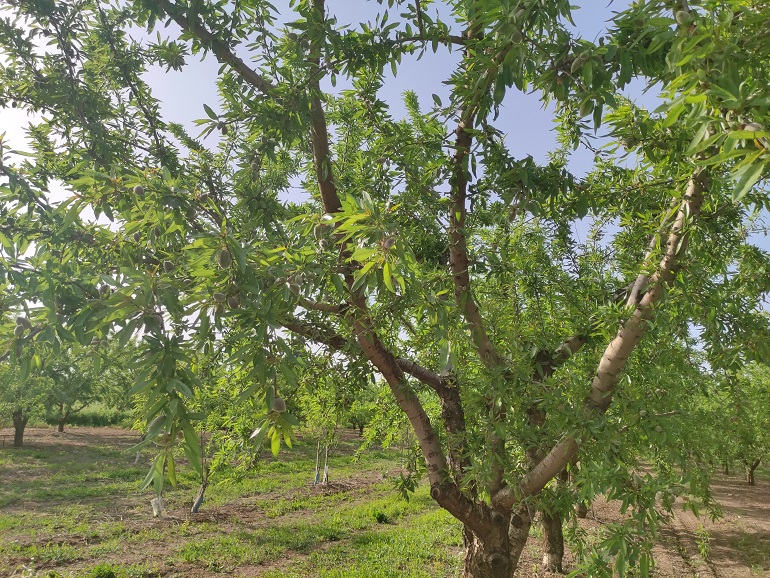Almond Tree Information

This post is also available in:
This post is also available in:
![]() Español (Spanish)
Español (Spanish) ![]() Français (French)
Français (French) ![]() Deutsch (German)
Deutsch (German) ![]() Nederlands (Dutch)
Nederlands (Dutch) ![]() العربية (Arabic)
العربية (Arabic) ![]() Türkçe (Turkish)
Türkçe (Turkish) ![]() 简体中文 (Chinese (Simplified))
简体中文 (Chinese (Simplified)) ![]() Italiano (Italian)
Italiano (Italian) ![]() Português (Portuguese (Brazil))
Português (Portuguese (Brazil)) ![]() polski (Polish)
polski (Polish)
Almond Tree Facts – Almond Tree Wiki
The almond tree is a deciduous tree (it loses its leaves seasonally) with average height of 20 feet (6 meters). It belongs to the Rosaceae family.
The almond tree is one of the oldest nut trees that were cultivated by humans. Almond tree is cultivated mostly in US (Central California, Arizona, Texas, Georgia) and in countries like Spain, Italy, Iran, Syria, Morocco and Australia. During the last two decades, California Almond production has tripled, making California account for over 80% of world supply. The average almond tree enters maturity period (and hence can produce good yields) from the 8th year of its age. Its life expectancy is estimated at 50 years.
The almond tree is cultivated for its fruit, almonds. The sweet almond (kernel) can be eaten plain or be used as ingredient in desserts and confectioneries (sugared almonds, pastries, almond milk). Moreover, bitter almonds are used for producing almond oil, which is widely used in pharmacy (cosmetics and other). The residues from the production of almond oil are poisonous and should not be used as a source for livestock feed.
Almond is a stone fruit (drupe) and consists of three layers, the outer exocarp, the middle fleshy mesocarp, and the inner endocarp. The edible part of the fruit is the seed, which can be sweet, slightly bitter or bitter. The almond is a valued nutritious commodity with excellent nutritional value. Consuming almonds has been found to lower cholesterol effects, reduce risk of heart attack, boost energy and have positive effect on fertility problems.
However, only sweet almonds can be consumed plain or be used in cooking. Bitter almonds contain a substance that can be transformed in another poisonous substance, which may result in life threatening situations for humans. It is estimated that -on average- a bitter almond contains amygdalin capable of producing 1 mg of hydrocyanic acid (poison). The lethal dose of hydrocyanic acid is about 40 mg for the average adult (about 40 bitter almonds) and about 5-10 mg (5-10 bitter almonds) for kids. However, these data may differ significantly according to the variety and distinct characteristics of each bitter almond. Moreover, the lethal doses of poisonous substances have been found to vary significantly even among humans with the same weight, age and physical condition. Consequently, it should not be regarded as safe to eat even one bitter almond.
You can enrich this article by leaving a comment or photo of your almond trees.
1.) Almond Tree Info & Uses
2.) How to grow an Almond Tree from seed
3.) Growing Almond Trees for Profit
4.) Almond Tree Climate Requirements
5.) Almond Tree Soil Requirements & Preparation
8.) Planting Almond Trees – Number of Almonds Trees per hectare and acre
10.) Almond Tree Water Requirements
11.) Almond Tree Fertilization
12.) Almond Tree Harvest & Yield
13.) Almond Tree Pests and Diseases
Do you have experience in Almond Tree cultivation? Please share your experience, methods and practices in the comments below. All the content you add will be soon reviewed by our agronomists. Once approved, it will be added to Wikifarmer.com and it will influence positively thousands of new and experienced farmers across the world.








































































